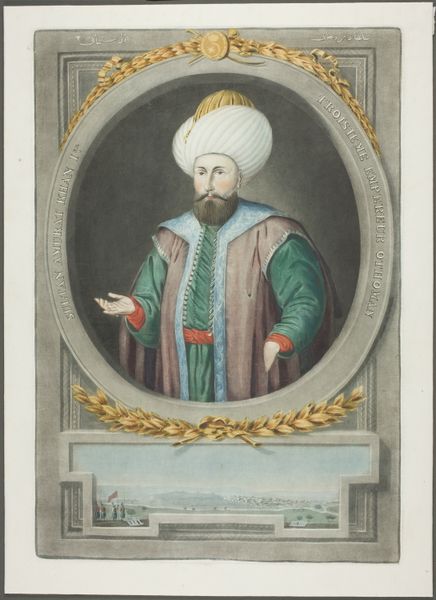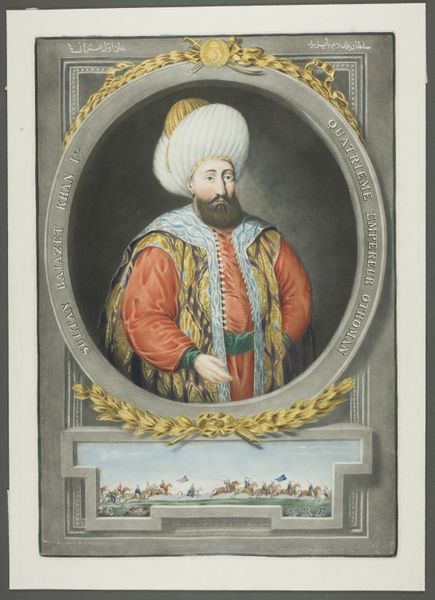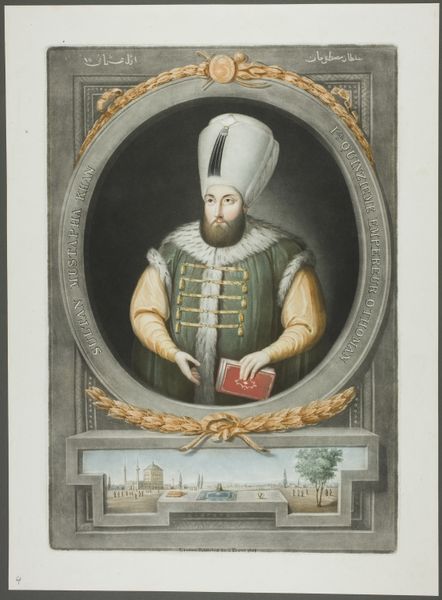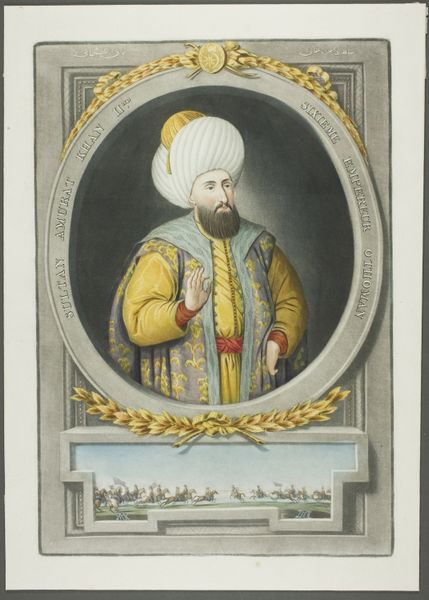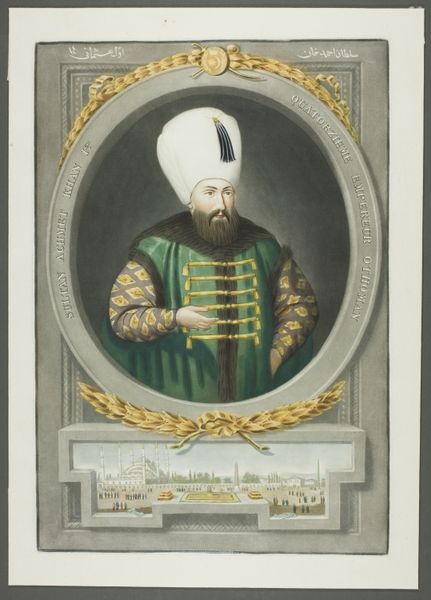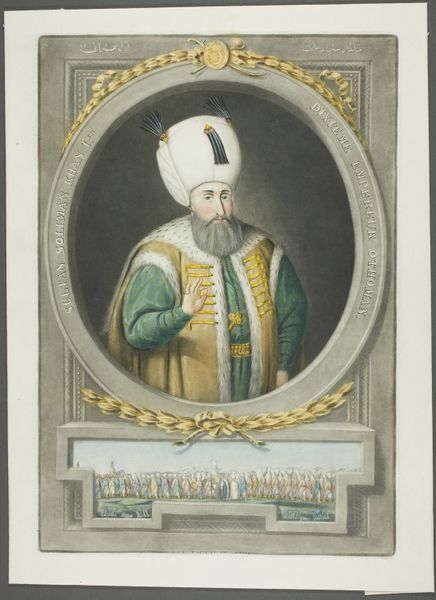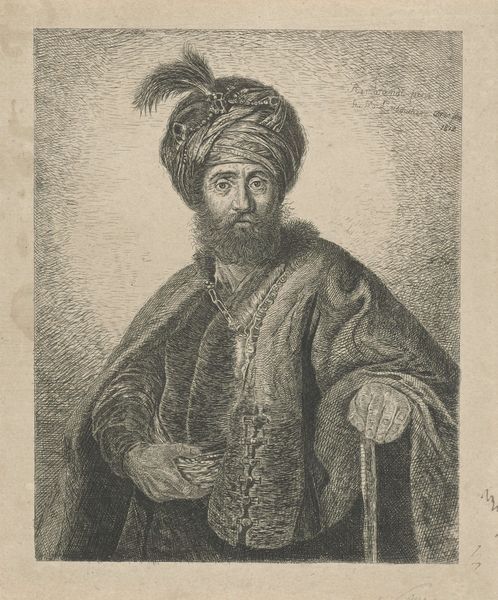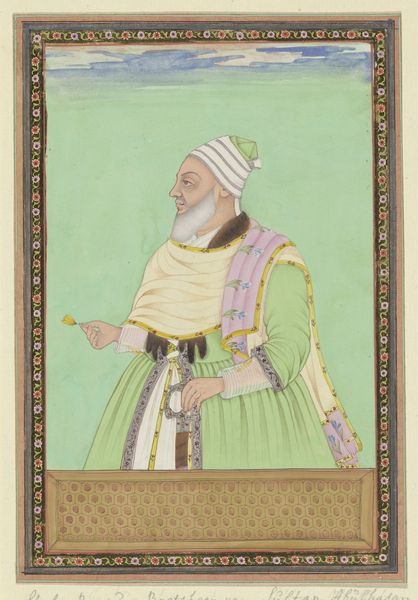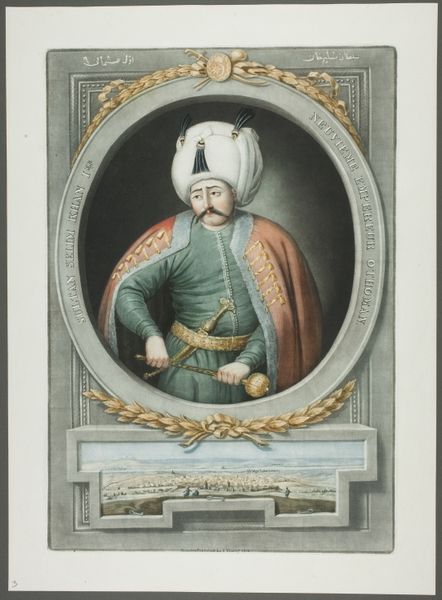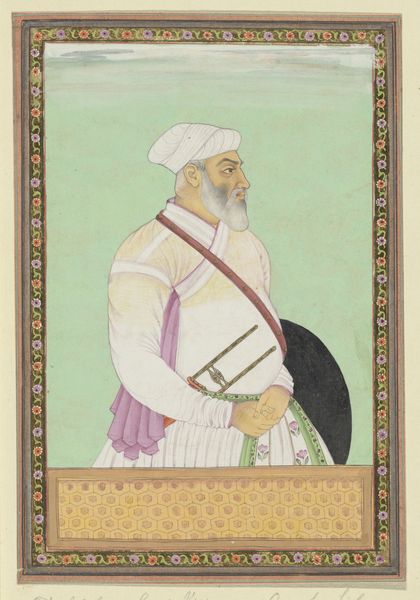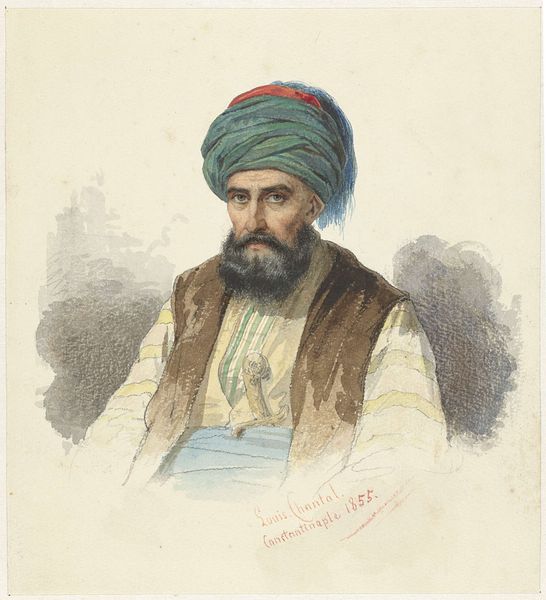
Othman Kahn I, from Portraits of the Emperors of Turkey 1815
0:00
0:00
drawing, painting, print, paper, watercolor
#
portrait
#
drawing
#
painting
# print
#
caricature
#
paper
#
watercolor
#
coloured pencil
#
islamic-art
#
watercolour illustration
#
history-painting
#
academic-art
#
miniature
Dimensions: 375 × 253 mm
Copyright: Public Domain
Curator: Here we have "Othman Kahn I, from Portraits of the Emperors of Turkey," dating back to 1815. The work combines painting, drawing, and printmaking on paper, crafted with watercolor and colored pencil. What are your initial impressions? Editor: Well, immediately, I’m struck by a sense of authority, and also a rigid formality. It's an image very deliberately composed to convey power, but there’s a curious tension there, too. Curator: Indeed. Observe the symmetry of the composition. The artist positions Othman Khan I within an oval frame, adorned with laurel leaves and inscriptions. Note how the sharp, deliberate lines define the figure, particularly in the face and the folds of his garments. It's all about structured elegance. Editor: I find the inscriptions themselves really interesting; the piece layers Ottoman, French, and likely other European modes of representation to create a very complex picture of political and cultural exchange. The portrait presents a figure of power, but the inclusion of various languages speaks to the complex negotiation of authority within the Ottoman Empire at the time. Who was this intended for? Curator: Excellent point. One must also consider the materiality, right? The delicate use of watercolor and colored pencil lends itself to a detailed yet somewhat softened representation. Notice the subtle gradations of color that define the Sultan's features. Editor: But it's a controlled softness, isn’t it? Almost as if the portrait tries to humanize an absolute monarch…which then also begs questions about the European gaze, and Orientalism, of course. Whose history are we really looking at here? Curator: The choice of watercolor, traditionally associated with European artistic practices, adds another layer to the interpretation, hinting at intercultural exchange, or even the European construction of "otherness." But looking at form, the miniaturist qualities point to its function within a book intended for collectors, thereby reinforcing its importance as a collector’s item more than a representation. Editor: Perhaps it suggests something beyond simple admiration—an engagement with how the Ottomans positioned themselves and their rulers. This layering, the portraiture traditions being co-opted or deployed, and the miniature-style image, tells a powerful story about the negotiation of power, identity, and representation. Curator: It invites careful consideration, doesn't it? Editor: Absolutely. I find myself wondering about how Ottoman viewers interpreted these elements.
Comments
No comments
Be the first to comment and join the conversation on the ultimate creative platform.
